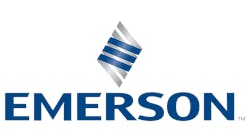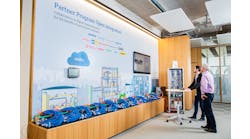New technology has historically brought disruptive change in the process automation field—not because of the technology itself, but because of the capability it enables that brings new value to the fore.
This happened as the introduction of microprocessors and digital communications led to distributed control systems and the migration of intelligence into field devices. These technology changes enabled users to gain more insight into their plants—not only about process variables, but also about the current and future health of the devices and the process. The additional information enabled them to make a step change in the performance of their business through more flexible operations, increased safety, decreased operations cost, reduced downtime and decreased cost of change.
However, even with these innovations and the benefits of a digital plant, there are still untapped opportunities to reach new levels of process and business performance. Valuable information that can enhance productivity may still be out of reach because accessing it would be cost-prohibitive or technologically impractical.
WIRELESS ARCHITECTURE INTEGRATES SEAMLESSLY WITH EXISTING INFRASTRUCTURE
Emerson Process Management’s Smart Wireless solutions operate on an integrated wireless architecture for plant- and field-level communications. A complete set of technical documentation, online tools and information about the newest additions to theSmart Wireless portfolio is available at www.EmersonProcess.com/SmartWireless.
For example, what if you could immediately detect leaks and releases before they lead to environmental problems and potentially millions in fines? Pinpoint corrosion inside piping and vibration or temperature excursions that are attacking equipment life? How much more productive could your workers be if they had access to process and control information even when they’re not in the control room or maintenance shop?
Early adopters of wireless technologies already are “thinking beyond the wire,” addressing these and other challenges. And with the recent completion of the WirelessHART standard, the floodgates of newly interoperable wireless instruments and systems are poised to open further.
“It has been exciting to see how in-plant wireless functionality has captured the imagination of managers, engineers and operations personnel,” says John Berra, president of Emerson Process Management, of the company’s Smart Wireless products. “Once they started using the technology, they were able to envision additional applications. These innovative first movers are already confident and are well down the path to broader implementation of wireless. We are pleased that, thanks to them, our Smart Wireless products have a track record of success in installations across industries and worldwide. As a result, we’re expanding—adding to the industry’s broadest wireless solution set.”
Today, much discussion of the potential for wireless focuses on quickly adding a transmitter for a difficult-to-reach process parameter, or on the ease with which a new measurement point can be added to a current installation. But wireless, like Foundation fieldbus before it, also promises to reduce the cost of routine instrumentation tasks significantly—and ultimately has the potential to revolutionize control system strategies.
Whether retrofitting a current system or designing a greenfield project from scratch, wireless now gives system designers out-of-the-box access to multiple instrument variables and a wealth of onboard diagnostics. Who can say what creativity that will unleash? Additional new project benefits come from reduced physical space requirements and from the increased flexibility and ease of expansion inherent in a wireless system.
What Can Wireless Do for You?
In past technology shifts, it wasn’t the technology itself (such as microprocessors or digital communications) that drove the shift; it was applications that took advantage of the technology to deliver value. Similarly, the adoption of wireless technology is being driven by the ability to extend and manage the flow of information around the plant more easily and cost-effectively.
Wireless technology is not a complete replacement for wires, at least not for a while. But it is already enabling new tools that give you the freedom to solve problems you could not address cost-effectively in the purely wired world. The possibilities are limitless. Imagine a plant where:
- Safety relief valve emissions are monitored for more effective regulatory compliance;
- Safety showers are monitored 24/7 so help can be dispatched immediately;
- Wireless vibration sensors give you a real-time indication of equipment reliability every day, not just once a month/quarter/turnaround;
- The status of previously unmonitored plant equipment such as on-off valves is known and historicized in real time, providing a safer, more productive operating environment;
- Operators don’t have to make “clipboard rounds” to collect data;
- Diagnostics in HART devices—including those that couldn’t be accessed before—are available for asset management;
- Workers can access desktop applications and perform tasks—including viewing and responding to alarms from the field—wherever they are;
- The locations of personnel and physical assets in the plant are tracked at all times;
- You can broadcast messages to specific groups of workers wherever they are;
- Security systems track and ensure authorized plant access;
- Video systems not only patrol the fence line, but keep a cost-effective eye on the process;
- Corrosion in equipment and piping is monitored by wireless sensors.
Many of these applications are possible without wireless, but wiring costs or technical limitations make them impractical. Today’s cost-effective and easy-to-integrate wireless technology overcomes these barriers, enabling you to gain better insight into your plant—and ultimately make your workforce more productive.
“We are building an infrastructure that opens up opportunities for more applications,” says Gary Borham, operations manager at steelmaker Wheeling-Pittsburgh Steel Corp., where wireless transmitters measure cooling water flow and monitor grease system health in the congested, hot steel-mill environment. “The result is better information from difficult-to-reach areas of the mill,” Borham says, “and this is helping our personnel prevent unscheduled downtime, meet customers’ quality requirements and optimize productivity.”
EVERYTHING YOU NEED TO GO WIRELESS, RIGHT OUT OF THE BOX
Emerson Process Management’s Wireless SmartPack™ Starter Kit consists of SmartStart services; from 5 to 25 wireless devices from Emerson; Smart Wireless gateway; and AMS Suite software application for access to predictive information. Completely pre-engineered, checked out and configured, the network will form right out of the box, with no additional user input or setup. More details are available at www.EmersonProcess.com/SmartPack.
Easily Tap Plant and Process Information
The more you know about the process, physical assets and overall operations of your plant, the safer and more profitable your business can become. More (and better) measurements mean more opportunities for reducing operational costs and improving quality, throughput and availability. In addition, new environmental and safety requirements have been established after many of today’s facilities were built, and plants have struggled to get access to measurement and diagnostic information that could ease compliance.
So, why aren’t more plants “measuring up”? Too often, the cost or difficulty of adding new measurements has outweighed the perceived value.
With traditional wired technologies, distance or complexity can make connecting the measurement point to a control, asset management or maintenance system, or data historian impractical or cost-prohibitive.
Wireless technology removes the barriers of traditional wired solutions and gives you unprecedented access to data that was previously out of economic or technical reach. Imagine, for example, the benefits of additional temperature measurements to detect cool spots in steam lines, or the advantages gained by cost-effectively instrumenting a remote tank farm.
Remote Infrastructure?
At Milford Power, a 500-megawatt plant on the Connecticut coastline in the U.S., wireless transmitters monitor temperatures in 11 remote buildings that house infrastructure equipment, including water circulation pumps. In the winter, small heaters in each building prevent pump systems from freezing, knocking that pump out of commission for three days and costing up to $20,000 to repair. A wired solution would have been cost-prohibitive, so temperatures were checked when operators made rounds to perform their visual checks of the pumps.
NOT TOO LATE TO ENTER INNOVATORS CONTEST
Nominations for the Smart Wireless Innovators Contest, seeking to recognize engineers and companies for their leadership in applying technology for plant improvements, are open until July 31, 2008. A panel of customer peers will judge entries and designate two winners who will be awarded a crystal plaque, cash reward, and expense-paid trip to the 2008 Emerson Global Users Exchange in Washington, D.C., where they will be formally honored. More information is provided online: www.EmersonProcess.com/SmartWireless.
But wireless saved $75,000 in installation and capital costs, making automatic monitoring possible. “It only took two hours to place the eleven devices in the pump buildings and have them communicating to each other,” says Cliff Esmiol, maintenance supervisor. “They easily communicated around buildings and other obstructions.”
In fact, when a new steel and concrete building was constructed in the plant, it completely blocked a transmitter from the other transmitters in the mesh. The signal, however, was unaffected.
And wireless isn’t just opening access to traditional measurements, such as temperature and pressures, but to instrument and equipment information as well.
For example, millions of smart HART-based devices in the field today have some level of diagnostics capability. Unfortunately, many plants don’t have the infrastructure to receive HART data into the appropriate system. Since only a fraction of these devices are digitally monitored, the potential gain from accessing such “stranded” diagnostics is significant.
With wireless technology, the data doesn’t have to be stranded anymore. Existing wired HART devices can be upgraded with a wireless adapter to transmit diagnostic information back to the control room or maintenance shop, where appropriate personnel can take corrective action as needed. Process control signals continue to be communicated over the wired connection.
The possibilities are almost limitless. Just think of all the things you’ve always wanted to measure, but couldn’t justify the investment. Chances are that now you can.
Indeed, the ease with which new measurements can now be implemented has proven to be a game-changer for early adopters. “When Emerson approached me with their industrial wireless solution, they said ‘We’re plug-and-play,’” says Tim Gerami, a senior design engineer at PPG Industries’ Lake Charles, La., facility. “I gotta admit, I kind of laughed. Nothing I’d seen so far was that easy,” he continued. “But I’m a believer now. Five minutes after installing it, the wireless network came alive. It’s been there ever since.”
Enable A Mobile Workforce
In an era when an aging workforce and loss of experience are among the most pressing business problems process manufacturers face, wireless technology can empower next-generation plant workers, just as cell phones and PDAs have empowered the mobile business person today.
Even during normal operations, it’s not uncommon for a large plant to have hundreds of people working throughout the plant, often far from their control rooms, maintenance shops or offices. The new wave of wireless tools are dramatically improving their productivity by providing instant access to information they otherwise would have had to cover considerable distance to get, or take valuable time from other plant personnel to find out.
For example, although technology has enabled operators to perform many of their control and monitoring duties from the comfort and safety of the control room, there are still times when they have to go out into the field. Some companies routinely have their operators make rounds to see firsthand how the plant is running. By providing remote access to control and asset-management systems, a rugged, wireless PC can greatly enhance operators’ efficiency, as they will be able to immediately relate what they see to what is happening to the process and take quick corrective action.
When operators are in the field, there may be no one in the control room watching for alarms. But with wireless access points throughout the plant, operators can use these PCs or similar tools to access critical process information, historical data, graphics and other key functions that normally reside in the control room or elsewhere in the plant.
Improve Business and Process Management
Wireless applications, such as personnel and asset locating, as well as wireless video surveillance for security and safety, have changed the way offices, hospitals, warehouses and retail stores operate. These applications can also address business needs such as improving safety and security inside process environments.
Many plants already are using wireless technologies to improve security. Wireless closed-circuit television cameras and RFID-equipped access badges enable intelligent security monitoring and control from restricting access to specific areas based on levels of security, to tracking attempts to violate security protocols and helping security managers identify potential vulnerabilities.
Wireless location technologies allow you to find and track inventory and valuable assets—even workers—moving inside and outside the plant quickly. Time spent looking for assets can be reduced dramatically, which can have significant benefits during major turnarounds, emergencies and new construction projects. Being able to locate each worker quickly also offers safety and productivity benefits.
Wireless Implementation Starts with Education
In order to begin to take full advantage of the promise of wireless, a basic understanding of how wireless works—and how it can be used to improve plant, process and project performance—is needed. And Emerson Process Management’s online PlantWeb University is a great place to start.
PlantWeb University features a broad range of online engineering and business training and now includes a new 21-course wireless curriculum encompassing an introduction to wireless technology, how wireless can help you solve common problems and access information that was previously out of economic and technical reach, as well as practical advice on implementing wireless solutions.
“The new PlantWeb University courses will help users understand the basics of wireless technology, what it can do for them and how they can put it to work in their own operations,” says Jane Lansing, vice president, marketing, for Emerson Process Management. Join 60,000 other registered learners at www.PlantWebUniversity.com.
|
Start Anywhere, Start TodayEmerson Process Management’s approach, called Smart Wireless, is neither a top-down nor a bottom-up model. You can begin at the plant level and work down to the field, or at the field and work up. Start anywhere based on what your highest priority needs are. You’re not required to invest in an expensive wireless infrastructure throughout your facility to try out a simple monitoring application. The company’s gateways, devices, access points and software use wireless communication standards and have gone through rigorous coexistence testing. This ensures that wherever you start in the architecture, you can seamlessly and easily expand later as your budget and confidence in the technology evolve. For example, would additional process measurements help you improve product quality or reduce energy usage? Build a self-organizing sensor network at the field level starting with just a single gateway. Need to provide mobile access to plant information? Set up plant-level wireless access points so workers can get the information they need wherever they are. Are both types of applications important? Implement both at once, using the plant-through-field strength of the unified Smart Wireless architecture. In short, flexibility and scalability mean you can start wherever it makes sense for you—without investing in more infrastructure than you need. The products and knowledge are in place and the value clear for starting wireless now. By picking an application—even a small one—you’ll join early movers enjoying the satisfaction of application improvements they could only imagine before wireless. And you’ll gain confidence and knowledge in the use of wireless, a technology set to make broad inroads industry-wide because of the significant improvements in efficiency and performance it delivers. |




